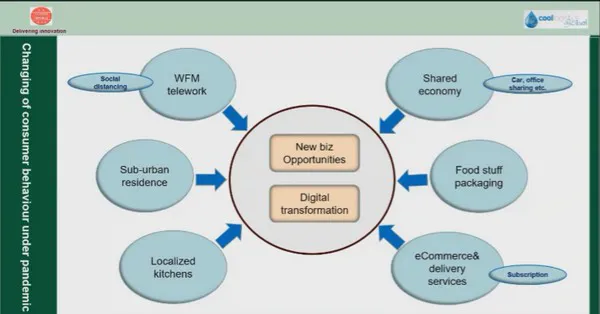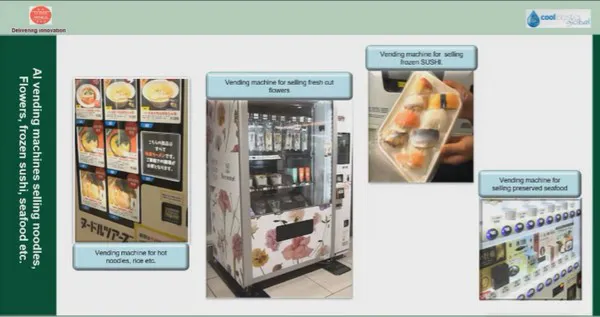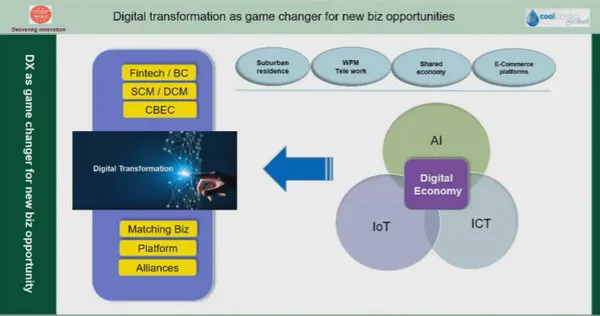On the final day of the 13th edition of the Cool Logistic 2021 conference, Andy Connell and Alfred Chung discussed how the pandemic has changed consumer behaviour and how it has changed technology in the logistical chain.
Alfred Cheung, Founder, Green Society Association, Adjunct Professor, City University of Hong Kong, Chief Representative, Overseas Development, China International Cross-Border E-commerce Industry
Andy Connell, Lead Technical Consultant, A-Bar-C Services
Alfred opened by saying that consumer behaviour has changed during the pandemic, as have demographics and environmental awareness. This has had an impact on the worldwide food supply chain and on the reefer technology and cold chain management. It has led to a new normal with people working from home and has created many new opportunities for businesses.

The changing pattern of consumer behaviour means that people are working at home and are also cooking at home and using food delivery services more often.
Buying online has created a big demand and put pressure on the cold chain and accelerated advances in reefer technology. More high chill containers are being used as they offer maximum capacity in a limited space. Asia is seeing a move to rail transportation as there is no congestion and it is cheaper than air freight.
Andy commented that there is a big demand for rail freight in South Africa and a call to improve the infrastructure as the roads can’t cope with the traffic. They have trains running with 48 chilled containers on them.
Alfred points out that the changes which have accelerated by the pandemic throw up lots of new business opportunities. In Asia people are moving out of the big cities as they can now work from home giving opportunities in suburban areas. Also before people had to go out to restaurants to eat really good food, but now meal kits can be ordered and prepared at home, this also opens new business opportunities for packaging companies and of course those developing aps for ordering food online.
Andy said that in Cape Town alone the demand for scooters to make deliveries has doubled, this in itself has created many jobs. This has continued even after lock downs stopped. He asked whether there was a danger of social isolation and a demise in customer – seller relationships.
Alfred answered that new virtual relations were being formed, with easy ordering, easy feedback and a lot of consumer information being acquired.

He spoke about the rise of the refrigerated vending machines which dispense a variety of meals which can eaten right away or quickly heated at home. These are equipped with AI technology giving a mass of information to the vendor about who is buying the product and how often, as well as restocking needs to happen. He said it is a new interaction between machines and people and the data can be used to predict future trends.

According to Alfred digital transformation is already happening whether you like it or not.
As countries come out of lockdowns some people will go back to the ‘old ways’ but many will continue to use ecommerce and delivery services for food. This will mean changes to the last mile of food delivery.

This is a logistical issue and the current set up won’t work, again he said this created opportunities. Customers are looking for fast delivery and some companies are moving forward quickly on this.
What does this new trend in home delivery mean for the environment, more packaging, more plastic food containers etc.?
Alfred said that in Japan mainly paper packaging is used, they use an A4 sheet of paper and fold it into a container. In order to reduce the carbon footprint, bicycles or electric scooters can be used for delivery, also micro supermarkets in suburban areas should increase to shorten the distance to the consumer.
